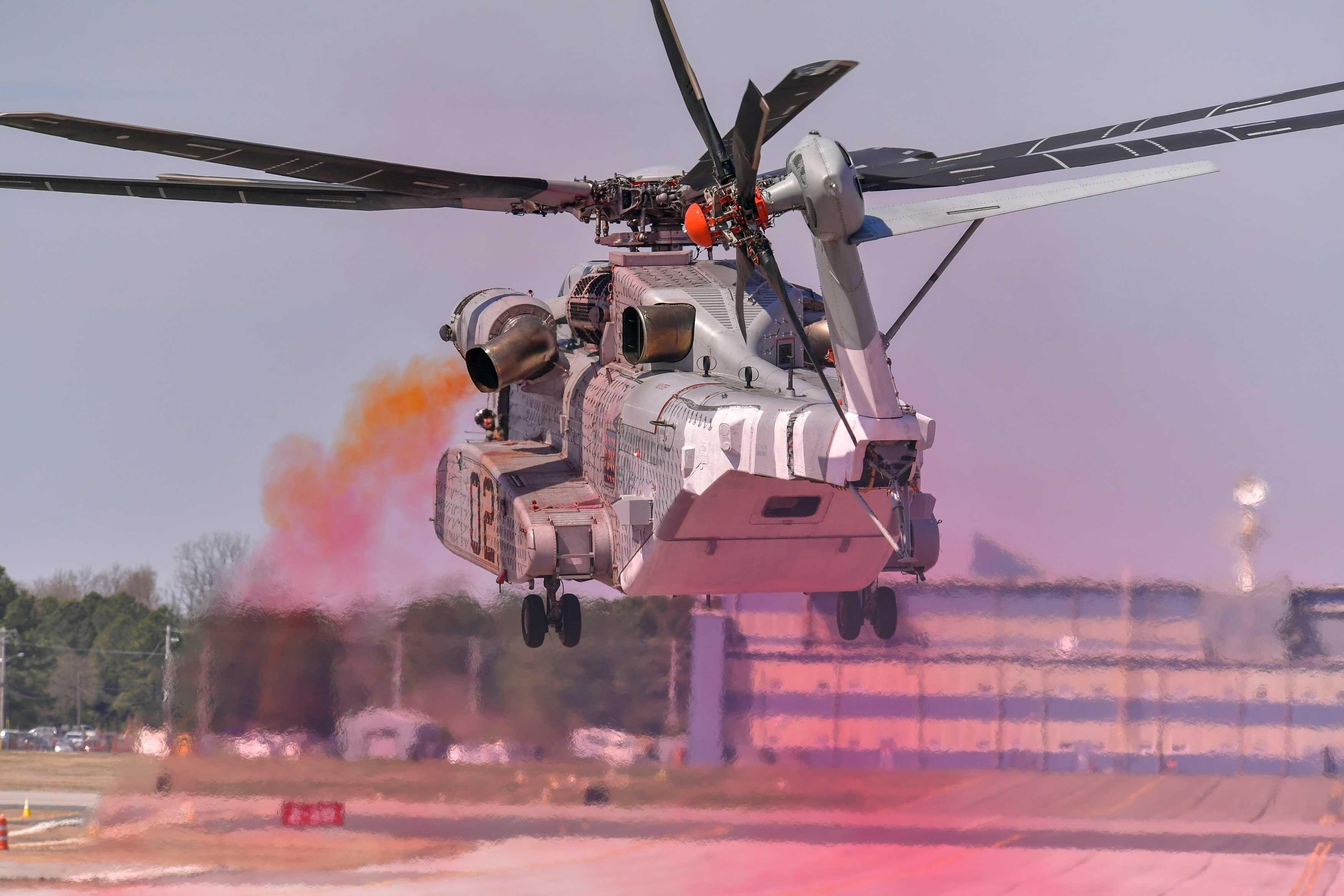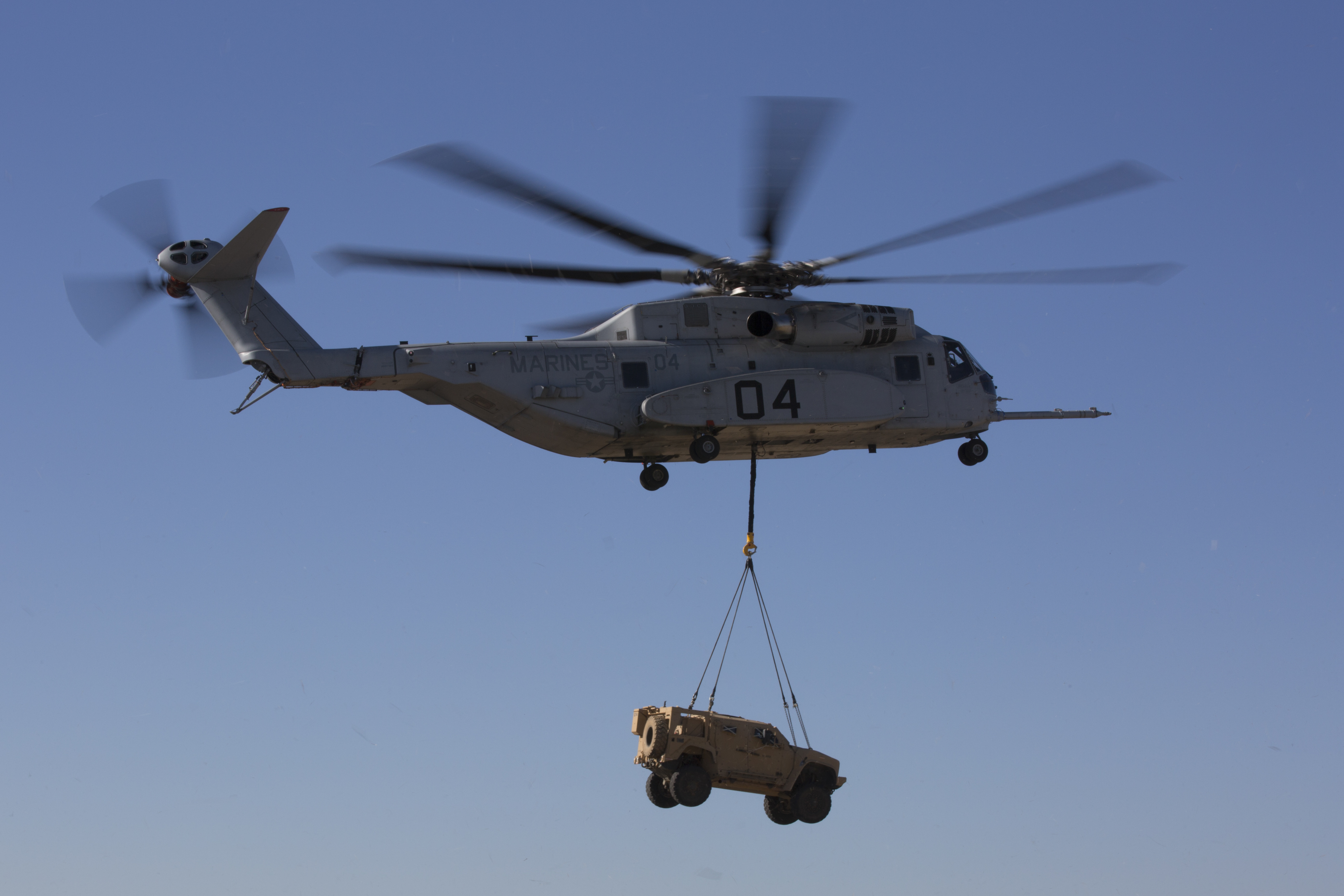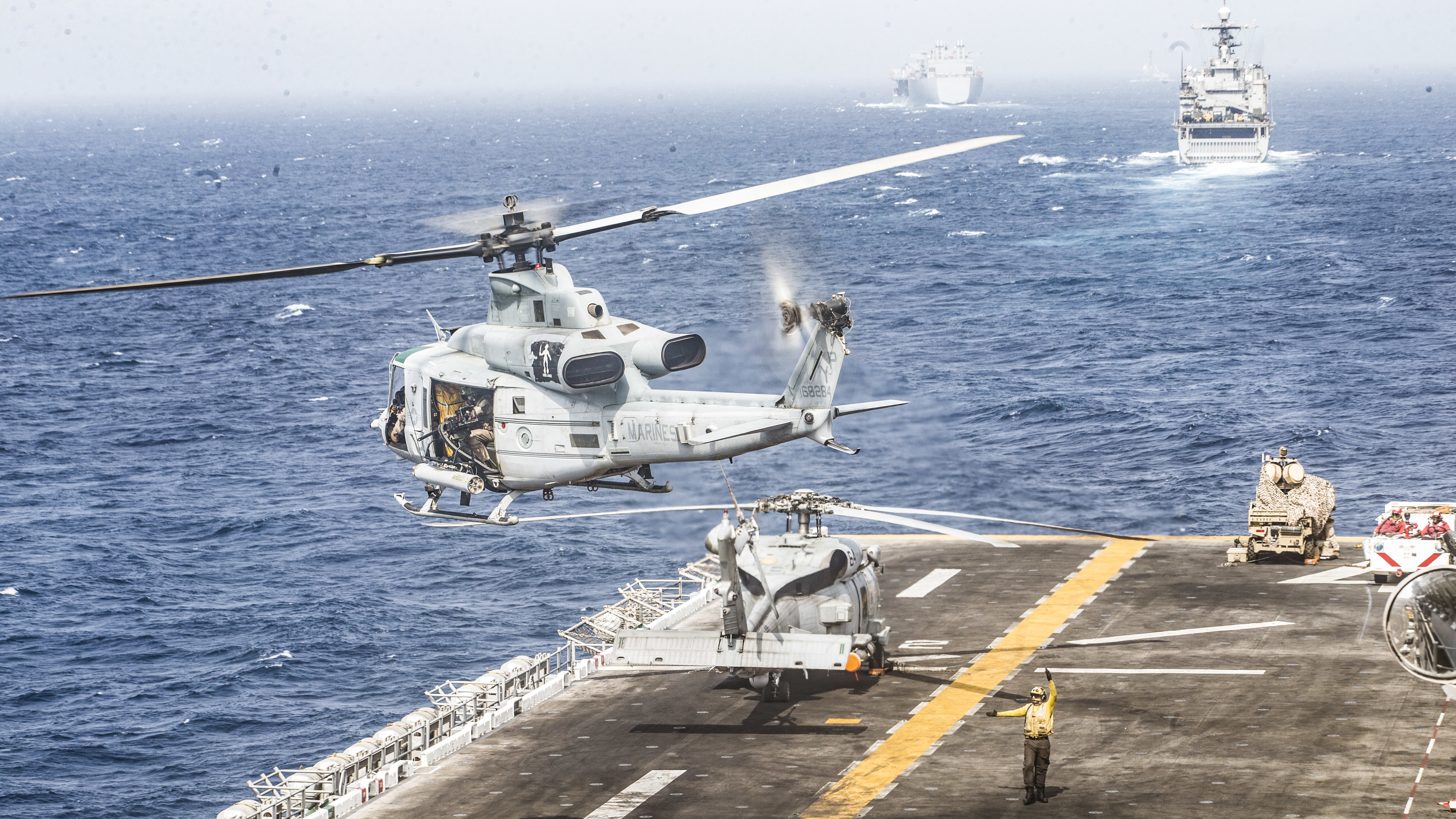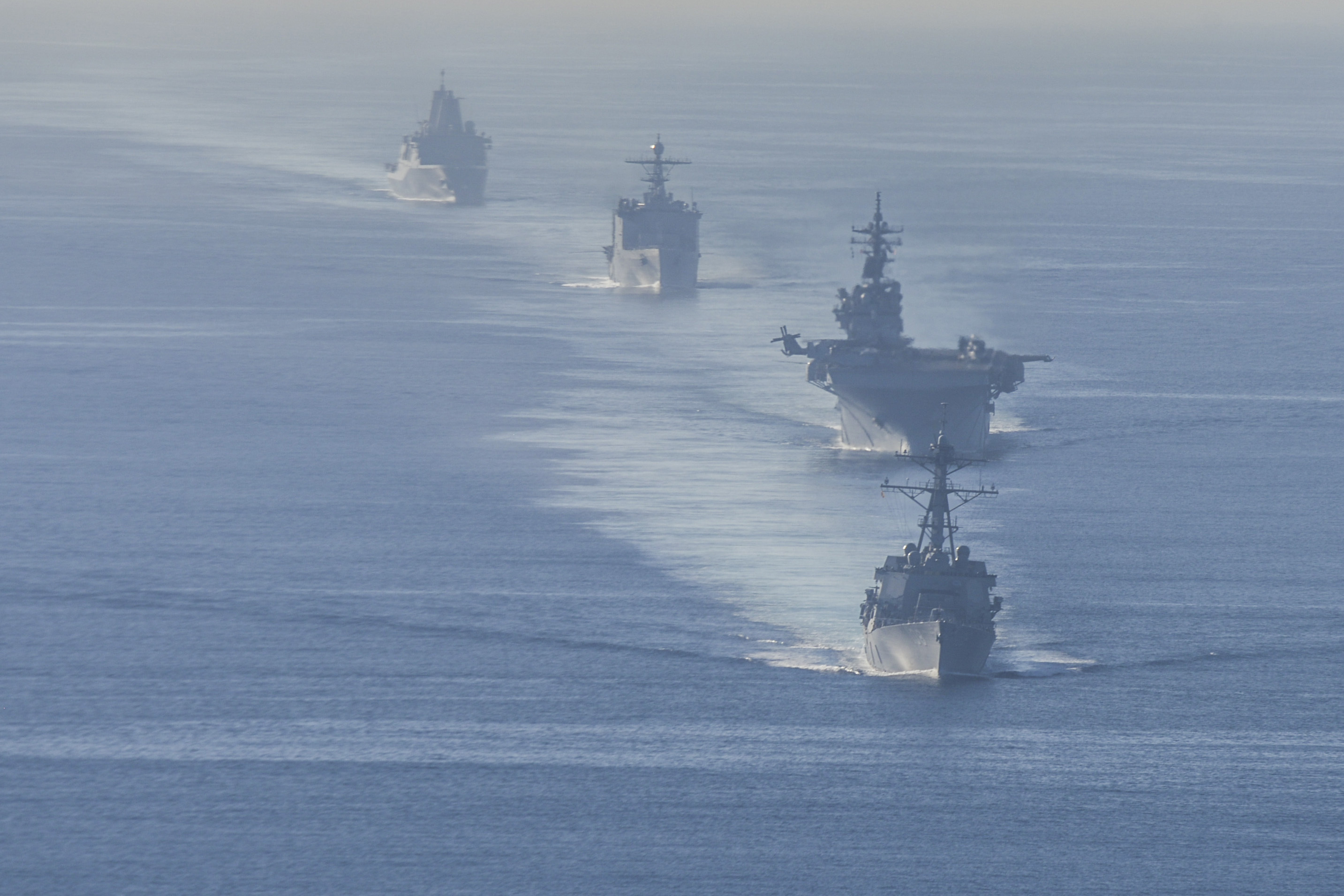
This post is part of a series of review stories looking back at the top naval news from 2019.
The Marine Corps in 2019 continued on its path to modernize aging systems to allow Marines to move across the air, land and sea in a high-end environment.
The service mostly saw success in these programs, with the Amphibious Combat Vehicle proving itself in harsh climates and acquisition officials making concrete decisions on what the replacement for the aging Light Armored Vehicle should be.
Still, the CH-53K heavy-lift helicopter replacement hit a major snag, with its testing program being revamped after an engine integration challenge arose and the program failed to move through the testing requirements as quickly as planned.
The following acquisition successes and failures moved the Marine Corps a little closer to its vision of moving Marines around a littoral battlefield with unmanned vehicles and long-range missiles employed by both sides of the fight.
Ground Vehicles

The Marine Corps spent late 2018 and much of 2019 testing 16 vehicles delivered by BAE Systems during the ACV competition. The vehicles are based on the Iveco SuperAV design that the Italian Army has used since its 2010 acquisition program.
The Marine Corps originally planned to start with an ACV 1.1 vehicle that would include most of the desired features but may need assistance from a connector to move between the ship and the beach, and then eventually move to a 1.2 design that could independently swim. Marine Corps officials suspected during the competition that any potential winning design would be more sophisticated than the 1.1 requirements; in 2018 and 2019 a testing team from BAE and the Marine Corps put the vehicle through its paces during on-land and at-sea tests and allowed the service to officially nix the distinction between the ACV 1.1 and the ACV 1.2 designs.
That decision was based on testing done by a team of ACV operators from BAE Systems and the Marines’ new equipment training team, who conducted reliability growth testing with the 16 engineering and manufacturing development (EMD) vehicles delivered by BAE in the final stage of the competition. That testing showed that the vehicles produced in a serial production line at the York, Pa., plant could meet all ACV 1.2 requirements. The team had other responsibilities this year, including testing the Lot 1 vehicles coming off the production line and getting the 3rd Assault Amphibian Battalion ready to begin working with the new vehicles, but they also found time to take the original 16 vehicles to Alaska and other locations to continue testing them in harsh conditions and learning how the Marine Corps could best leverage this new capability.
Meanwhile, the Marine Corps settled on a “transformational capability” approach to replacing its Light Armored Vehicles that date back to the 1980s. In a combined effort between Marine Corps Systems Command and the Office of Naval Research, the Marines are looking for a vehicle that can sense the battlefield through the use of unmanned ground and aerial vehicles, pass video and data between vehicles, fire anti-tank missiles and more, to support a future war as outlined in the National Defense Strategy. Program officials say they’ve invested in upgrades for the legacy LAVs over the years but have run out of room and power for new technologies such as active protection systems that would keep Marines safer during operations.
Aircraft

On the aviation side, the Marine Corps looked at possible technological improvements to the MV-22 Osprey that would make it more lethal and survivable in a denied environment, and continued seeking industry input on a large unmanned aerial vehicle that could be flying by 2026, all in a bid to bring the vision of a networked, long-range force to the aviation community.
With the fifth-generation F-35B Joint Strike Fighter to pack a lethal punch and suck up intelligence on the battlefield, and the V-22 to carry Marines long distances while keeping the passengers in the back connected to troops on the ground through on-plane network connectivity, the glaring gap for Marine Corps Aviation is the heavy-lift helicopter.
The Marines began the year knowing their CH-53K helo testing was behind schedule and knowing there was an issue integrating the aircraft’s three engines, but it wasn’t clear a solution to either was in sight. Though Navy and Marine Corps leadership said the problems were “fixable,” they ultimately overhauled the test program to lay out a more efficient path to checking off the remaining test requirements. A contract for the next dozen helicopters was awarded in May despite ongoing engine problems, and lawmakers approved a mid-year reprogramming request to give more money to CH-53K testing to try to keep the important program on track. Ultimately, through an intensive digital design and simulation effort followed by live testing, the Navy and Marine Corps and manufacturer Sikorsky were able to agree on a solution to the engine problem by mid-December, which will be incorporated in the production line and backfit onto existing helicopters.
Weapons

The Marine Corps has made clear that its future lies at sea with the Navy, as it will be called on to help gain and maintain sea control both from amphibious ships and from the shore. To be good partners in the blue/green team, the Marine Corps is interested in buying long-range anti-ship missiles “as fast as possible,” former Commandant Gen. Robert Neller told USNI News this year. “There’s a ground component to the maritime fight. We’re a naval force in a naval campaign; you have to help the ships control sea space. And you can do that from the land,” he said.
The service also made progress on transitioning its anti-drone system rushed to the field in the Middle East into a formal program of record. The Marine Air Defense Integrated System (MADIS) family of systems will include a mobile variant that will be affixed atop a Joint Light Tactical Vehicle and a fixed version to protect forward-operating bases – both to address smaller drones that could attack American forces or send their location back to an enemy – as well as a third variant that would be more of a medium-range intercept system akin to the U.S. Army’s Patriot battery or Israel’s Iron Dome system that combines a surveillance radar, fire control system and missiles to go after large Group 4 and 5 drones such as those fielded by Iran.
Thinking Outside the Box

Commandant Gen. David Berger put out a Commandant’s Planning Guidance shortly after taking command of the service that shook up a lot of assumptions about how the Marine Corps would fight and therefore how it needed to equip itself. Most noticeable in the document was a step back from the long-stated requirement for 38 amphibious warships to transport two Marine Expeditionary Brigades into battle; Berger called this notion of how to begin a fight outdated.
“We must acknowledge that different approaches are required given the proliferation of anti-access/area denial (A2AD) threat capabilities in mutually contested spaces. Visions of a massed naval armada nine nautical miles off-shore in the South China Sea preparing to launch the landing force in swarms of ACVs, LCUs, and LCACs are impractical and unreasonable,” he wrote.
As the service started making sense of what it was that Berger was calling for, it became clear that the service would want to get into theater by means other than just traditional amphibious warships – something smaller than a Whidbey Island-class LSD but larger than an LCU connector – to provide more flexibility to the force and to confuse the adversary. The idea of something akin to an Offshore Support Vessel came up, with the idea being that it would look more like commercial vessels to enemy radars and would confuse their ability to target Marines amidst littoral and blue water marine traffic.
Unmanned vehicles, too, could serve to move goods around the theater and to serve as decoys, leadership has said, again serving to create flexibility for operators and confusion for the enemy. Requirements for this smaller alternate ship and long-range unmanned surface vessel have not yet been written and passed along to Naval Sea Systems Command to begin working on, but conversations are ongoing between the Navy and Marine Corps to figure out exactly what features the Marines need and how to begin to engage industry on these programs.





